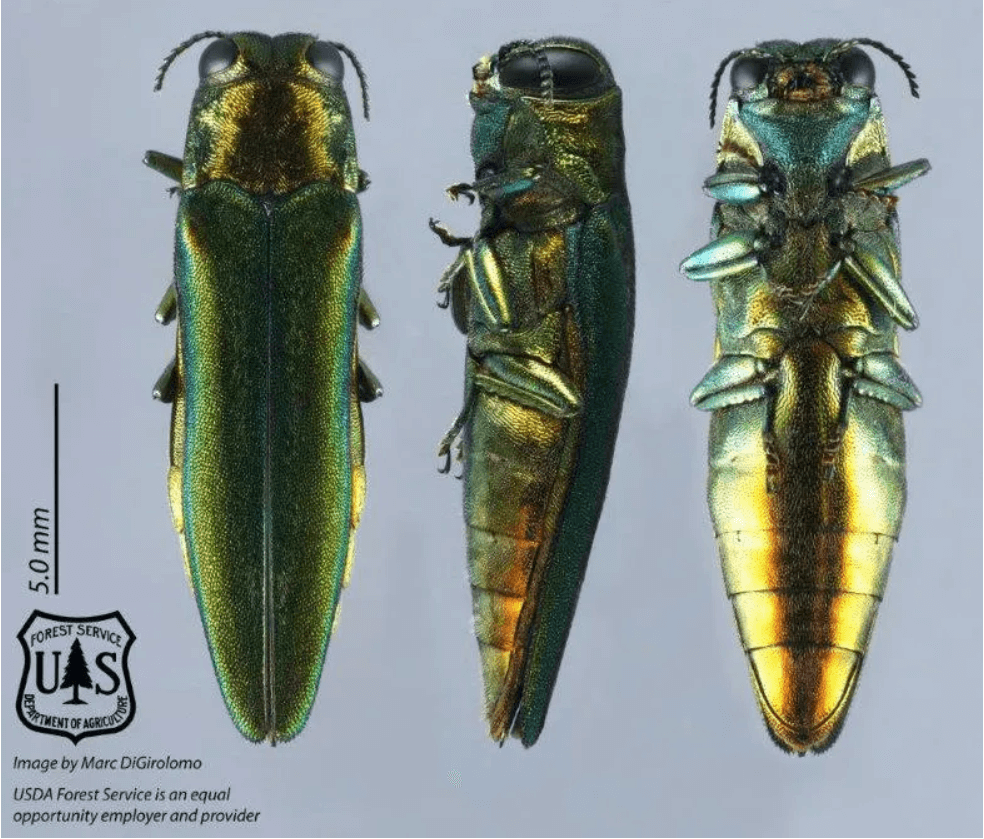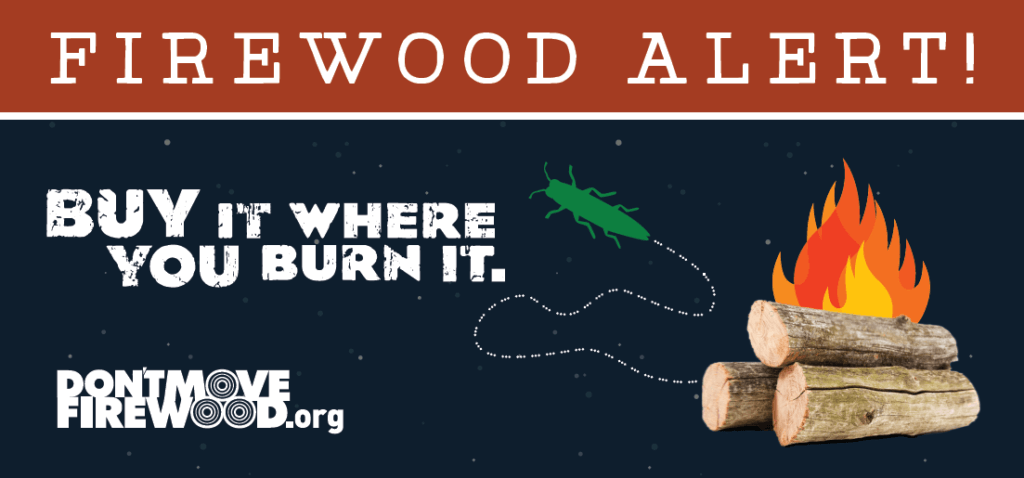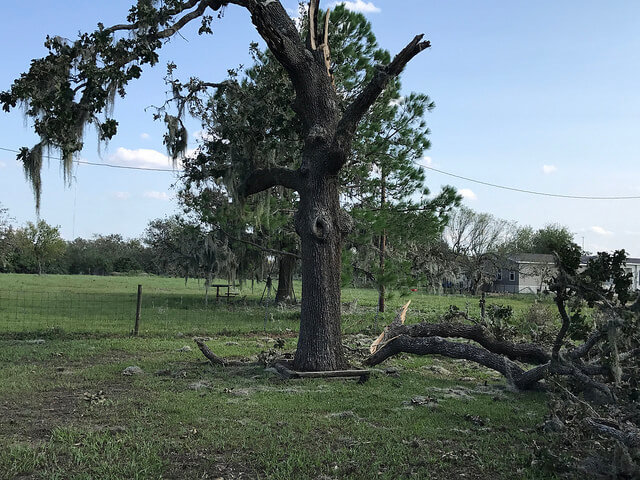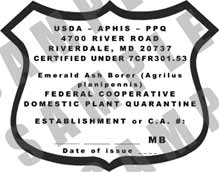
REPRINT courtesy of Entomology Today, Research News. See original here: Quarantines Remain Key Part of Emerald Ash Borer Control, Study Finds
By Laurel Downs and Leigh Greenwood
Emerald ash borer (Agrilus planipennis) is one of the most invasive and destructive tree pests in North America. It continues to spread across the United States and Canada, killing over 90 percent of ash trees (Fraxinus spp.) within a few years of establishing in a new area and causing hundreds of millions in economic damage since its initial detection in 2002. Since ash trees are a dominant species in urban environments, the current and projected loss of ash trees in cities imposes exorbitant monetary costs and leads to significant negative impacts on human health and wellbeing.
Management efforts to control the spread of emerald ash borer (EAB) and eradicate the pest in infestation zones have proven difficult due to multiple factors such as natural spread of the insect as well as human behaviors that result in long-distance movements. To reduce long-distance movement of this insect and other forest pests that move in or on firewood, The Nature Conservancy has led the Don’t Move Firewood educational campaign since 2008. The U.S.-based landscape of firewood regulations—such as firewood quarantines that legally limit the inbound or outbound movement of firewood to protected or from regulated areas—has strong impacts on the types of outreach and messages that Don’t Move Firewood communicates to the firewood-using public.

In a study published in February in Conservation Science and Practice, researchers used a complex spatiotemporal model to determine optimal management strategies for emerald ash borer in urban areas. “Understanding how and when to manage is a difficult problem,” says lead researcher Emma Hudgins, Ph.D., “because management action at any one site has ripple effects onto other sites due to changes in dispersal and growth dynamics of the invasive species.” Hudgins, now a lecturer at the University of Melbourne in Australia, led the study while a postdoctoral fellow at Carleton University in Ottawa, Canada.
Hudgins and colleagues sought to explore optimization of EAB management in the face of a changing strategic landscape in the U.S. Management efforts have shifted in recent years from a heavy reliance on a federal domestic quarantine to a focus on biological control (or biocontrol) using introduced stingless parasitoid wasps that prey exclusively on EAB eggs and larvae. The United States Department of Agriculture Animal and Plant Health Inspection Service (USDA APHIS) rescinded the federal domestic quarantine on EAB completely in January 2021, leaving state authorities with the decision to rescind, retain, or implement their own state-based quarantines.
U.S. federal authorities now allocate the bulk of EAB funding to biocontrol, which comes with its own complications. “Understanding management implications is especially complex with the advancement of biological control technology, where parasitoid species are released such that they themselves spread across an invaded range and control invasive species population densities,” Hudgins says. “Whether this decision was optimal to limit urban ash exposure was untested, and it could be leading to excess tree death.”

To find what management strategies minimize urban tree mortality under the current budget, the researchers derived a pest dispersal model as a mixed-integer linear program integrated with biocontrol and quarantine measures that results in an optimal spatiotemporal pattern of pest control. They then compared their findings with conventional management methods and the current EAB control strategies under USDA APHIS.
According to the model, combining quarantines with biocontrol is the best way to save ash trees. “We discovered that our optimized EAB management strategies, which incorporated quarantines and biocontrol together, consistently outperformed sole reliance on biological control, with a protection of up to 1 million additional street trees and savings of $629 million [U.S.] in tree removal and replacement costs between now and 2050,” Hudgins says.
The model showed optimal strategies not only relied on quarantines in addition to biocontrol, but they performed best with an unexpectedly strong majority of the funding directed toward maintaining effective quarantines around city centers. The study’s authors found that, while any management strategy with at least 20 percent spent on quarantines worked relatively well, the best results were seen when 98-99 percent of the budget was spent on quarantine with only 1-2 percent spent on biological control with parasitoids.
Findings from the study indicate that a coherent and harmonized effort to implement or maintain domestic quarantines in the U.S. could go as far as to save a billion dollars over the next three decades if implemented in a way that considers human behavior and connectivity among urban centers.
As it stands now, however, the regulatory environment affecting firewood movement within the U.S. is inconsistent, with just 18 of 50 states currently holding a partial or full external quarantine applicable to the movement of firewood that is potentially infested with emerald ash borer, leaving the remaining states particularly vulnerable to new infestations.

One example of the current inconsistencies is the difference between Oregon and Washington’s regulations. There is no current firewood or EAB quarantine to regulate the entry of out-of-state firewood into Washington, while its neighbor to the south, Oregon, has both an external firewood quarantine prohibiting the entry of higher-risk firewood and an internal quarantine prohibiting the outbound movement of materials from the area surrounding the only known infestation of emerald ash borer in the western United States.
At The Nature Conservancy, we are confident that the long-distance spread of emerald ash borer can be significantly reduced with appropriate firewood quarantines and a well-informed public. We’re pleased to see that this important study supports what all of our Don’t Move Firewood campaign partners can agree on: The persistent effort to maintain firewood rules and regulations in the public’s eye can and does protect trees.
Hudgins and colleagues intend to adapt their optimization framework for other management issues and species of concern. As stated in the study, “A future goal of this framework is to apply it across pest species to determine if there is predictable spatial patterning in management best practices across species.”
The widespread utilization of their framework in urban and forest health management could deliver invaluable benefits, not only in dollars saved but in the quality of life for countless numbers of people and wildlife that rely on the shade, water quality, environment, and beauty found amidst healthy trees.
Read the journal article: “Spread management priorities to limit emerald ash borer (Agrilus planipennis) impacts on United States street trees”
THIS NEWS PAGE IS A REPRINT courtesy of Entomology Today, Research News. See original here: Quarantines Remain Key Part of Emerald Ash Borer Control, Study Finds








